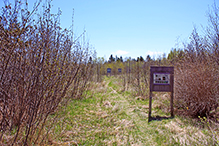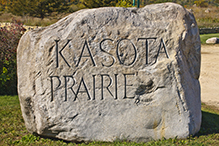Minnesota Destinations
Nature Centers, Sanctuaries, and Private Preserves
Nature Centers |
A nature center is a specific type of public facility area that has some key distinguishing characteristics:
Several nature centers are located within and administered by parks. They are considered part of that park and are not listed here. |
Audubon Center of the North Woods Belwin Conservancy Boulder Lake Environmental Learning Center Carpenter St. Croix Valley Nature Center Eagle Bluff Environmental Learning Center Jay C. Hormel Nature Center Maplewood Nature Center, Maplewood Quarry Hill Nature Center |
National Eagle Center
Sugarloaf Cove Nature Center |
Sanctuaries |
A sanctuary is a specific type of protected natural area that has some key distinguishing characteristics:
|
Blaine Wetland Sanctuary, Blaine |
Roberts Bird Sanctuary |
Private Preserves |
As the designation suggests, private preserves are privately owned. Cedar Creek Ecosystem Science Reserve is available only through guided tours arranged in advance or during the annual Cedar Creek Science Field Day held each summer. Kasota Prairie is owned and managed by Covia Corporation, formerly Unimin Corporation, in cooperation with Save the Kasota Prairie, a non-profit, tax-exempt organization. It is open to the public and charges no fee. McKnight Prairie is owned and managed by Carleton College. It is open to the public and charges no fee. Susie Island is owned by the Grand Portage Band of Lake Superior Chippewa. It is closed to the public. The island is best viewed from a boat, or from an overlook in Grand Portage State Park. Permission to visit must be obtained from the Grand Portage Reservation. |
|
Kasota Prairie |
Is Your Site Listed?
Do you represent a private nature preserve or nature center that is open to the public? MinnesotaSeasons.com would like to include your site on this list of private preserves. Click the Contact Us link on the menu or at the bottom of this page and tell us about your site or provide a link where we can learn more.
© MinnesotaSeasons.com. All rights reserved. |







